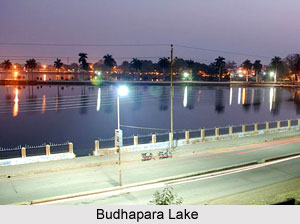Lakes of Chhattisgarh enhances the natural beauty to the lush green state and offers numerous stunning locales, which serve as picnic spots for the tourists. The most prominent lakes of Chhattisgarh, Arpa, Kodar, Jhumka, Banki and Kodar, are scattered through out the state in different regions. These lakes are amongst the most popular tourist destinations because of their dazzling appeal and beauty and exceptional ambience.
The lakes of Chhattisgarh help in promoting and boosting the tourism industry of the Indian state of Chhattisgarh, as tourists from all over the country travel to this region to experience the uncorrupted natural beauty of the area. Chattisgarh has eventually emerged as one of the most visited tourist destinations in the country, due to the presence of such natural attractions.
From Raipur, the capital city of the state, to other regions like Jajnjgir-Champa, Bilaspur etc., all are adorned by the beautiful lakes of Chhattisgarh. Apart from the stunning natural and perennial lakes, there are also a number of man-made artificial lakes that are created for the purpose of meeting the growing demands of water.
The lakes have been fully developed as tourist spots and thus contribute to the economic condition of the state. Most of the lakes offer boating and other leisurely water sports facilities for the tourists. Other than these, the lakes are also abundant with various species of fish. The lakes all add to improving the environmental condition of the region.
Apart from the most popular lakes, such as Arpa, Kodar, Jhumka, Banki and Kodar , there are other lakes of Chhattisgarh which are of adequate significance. These are mentioned below-
 Budhapara Lake
Budhapara Lake
This lake dates back to the year 1402 and is one of the most popular tourist destinations in the state. The Budhapara Lake was created by King Brahmdeo, the Kalchuri emperor. The lake draws several visitors with its tranquil and serene atmosphere.
Budha Talab Lake
Budha Talab, which literally means old lake or aged pond, is amongst the largest lakes in the city of Raipur. An island in the middle of the lake enhances the overall appeal of the lake. The lush green island, covered with gardens and trees is the major attraction of the lake.
Telibandha Talab Lake
Telibandha Talab is also located in Raipur, near the busiest areas of the city, the GE Road. Numerous rituals are performed on the lake as the local people consider the lake of utmost religious significance.
Maharajabandh Lake
Maharajabandh Lake is also located in Raipur. Due to the presence of several beautiful lakes, the city is called City of Lakes. Maharajabandh Lake was built by Maharaja Roadani in the year 1770. The Maharajabandh Lake is very important to the state from an historical point of view.
The government of Chhattisgarh takes adequate measures fro the appropriate preservation and maintenance of these lakes. The maintenance works are carried out frequently by state officials.



















